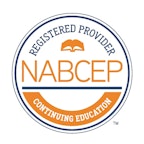Megawatt Design

About this course
Learning Objectives
- Project Qualification and Site Selection
- Equipment Selection
- Software Tools to Help the Design Process
- Optimizing System Design
- Fire Code and Structural Connections
- NEC Application and Utility Interconnection
- PV Installation Safety and Operations & Maintenance
- Permitting and Preparing Your Submittal Package
Course outline
Welcome • 7 assignments
Orientation Materials
Module 1 • 12 assignments
Project Lifecycle, Site Assessment and Investigation
Module 2 • 12 assignments
Equipment Selection
• Central/string/micro
• Transformer based vs. transformerless
• PID and Capacitive discharge
• Discuss array to inverter sizing strategies
• Monitoring and SCADA
• Tracking systems
• BOS strategies
Module 3 • 9 assignments
Software Tools to Help the Design Process
• Show different preliminary design tools
• Show/discuss energy estimation tools
• Manufacturer tools
• Drawing programs
Module 4 • 8 assignments
Optimizing System Design
• Value engineering conductors on dc side
• Array layouts and energy impact
• 1,000 V vs. 600 V
• DC to ac ratios
• Wire management in the design
• Designing with O&M in mind
Module 5 • 13 assignments
Fire Code and Structural Considerations
Module 6 • 18 assignments
NEC & eBOS Considerations
Module 7 • 9 assignments
NEC Application and Utility Interconnection
• Review NEC interconnection rules
• Discuss different interconnection methods
• Review design and drawing requirements
Module 8 • 12 assignments
Commissioning & Electrical Testing
Module 9 • 11 assignments
Permitting and Preparing Your Submittal Package
Module 10 • 2 assignments
Ground Mount Design
Conclusion • 5 assignments
Feedback and Additional Resources
Continuing Education Units
Approved for the following CEUs
- NABCEP Advanced Credit Hours
- NABCEP JTA
- NABCEP RE Elective
- NABCEP NEC
- 30 AIA LU/HSW Credits
- NABCEP PV Associate Renewal
NABCEP Registered Provider

This course counts towards the training requirements for taking NABCEP professional certification exams and CEUs for renewing all certifications.
Instructors

Will Lindsay
Will Lindsay has been working in the solar industry for two decades. He worked for Tesla's solar energy division for 10 years before starting work with Bay Area-based Sol Rebel, a firm that provides engineering and consulting services for the solar industry and project owners. Will has worked on thousands of residential, commercial and utility-based solar PV projects...

Randy Batchelor
Randy Batchelor is a licensed Electrical Engineer in California and is a NABCEP Certified PV Professional. He has experience with projects ranging from small off-grid power systems to utility-scale plants connected at medium Voltage. Randy has been working in the solar industry since 2006 and has been involved in the design and construction of hundreds of PV systems,...
Frequently asked questions
Full FAQHow does this course work?
How long do I have access to the materials?
What system sizes is this course intended for? Does it cover ground mounted systems in detail?
A number of considerations for ground mount systems are also discussed, including: racking systems, fire clearances and roads, and overall system architecture (AC versus DC, etc.). The resources provided cover topics relevant to ground mount systems in more detail.
The instructors have years of experience designing ground mount systems. They are happy to address any participant questions about ground mount systems and provide additional resources for learning more.